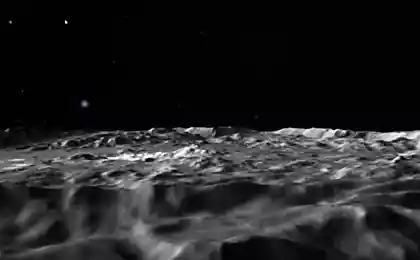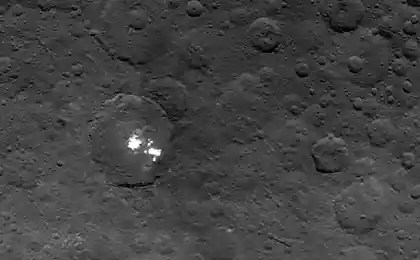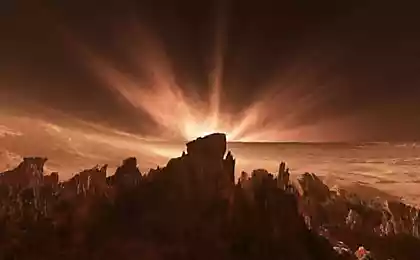799
Ice volcanoes and Ceres
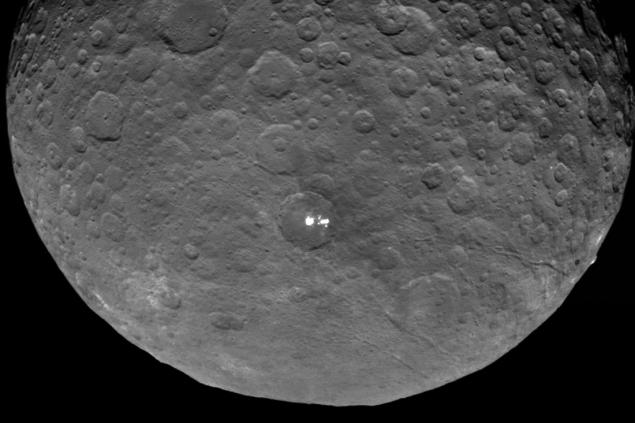
The space probe NASA Dawn («Dawn") approaches the dwarf planet Ceres. Each time the pictures of this mysterious celestial body, rotating between the orbits of Mars and Jupiter, opening new details.
Under the cut by 10 mb gif. I>
Mysteries of Ceres began even before Dawn came to her. One and a half years earlier infrared space telescope ESA Herschel was able to identify two points on the surface of the dwarf planet where water evaporates . Evaporation was about 6 kg per second, which is not as ambitious as, for example, the geysers of Enceladus.
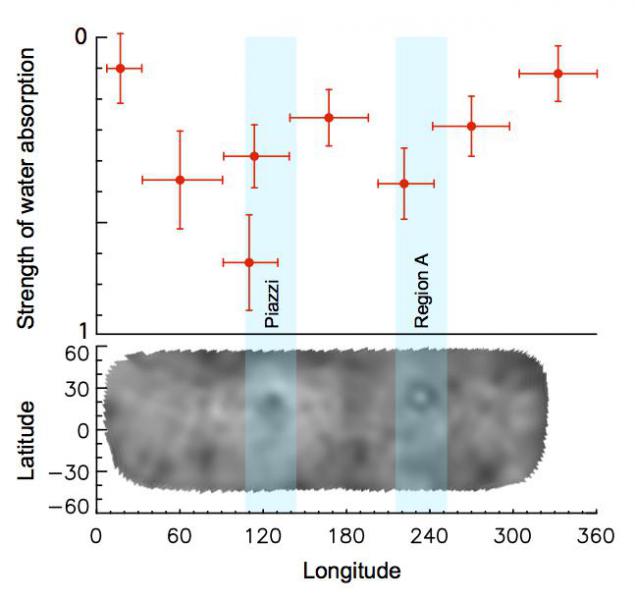
In February 2015, the first pictures with a more or less decent detail, showed unusual objects on the surface of the dwarf planet. One point roughly corresponds to the source of water evaporation Region A:
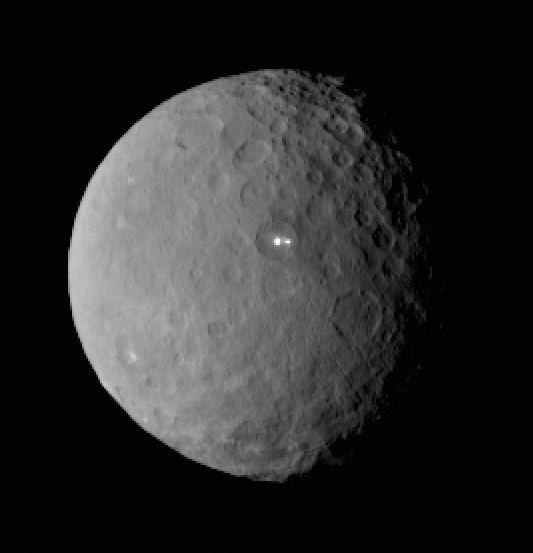
It is not known what kind of bright objects. NASA even vote arranged. Though, most likely, it is water ice. By itself, the ice on the Ceres is not surprising. It is believed that all of its outer crust is made up of frozen water. At the same time, Ceres is practically on the border of so-called & Quot; снеговой line & quot ;, which separates the inner solar system from the outside. The difference - in the interaction of frozen water and sunlight. Inside - the sun evaporates the ice. Outside the snow line - light has sufficient intensity and simply reflected. Therefore, in the orbit of Jupiter's moons may exist ice kind of Europe, and in the orbit of Mars - no.
Ceres is located at the boundary, but still inside, and ice must be evaporated. Fortunately for the dwarf planet, it is covered with debris, which is dotted with it for billions of years spent in the asteroid belt. Therefore, the surface of Ceres color is not much different from the Moon or Mercury.
Yesterday, NASA released a new animation rotation of Ceres. It is possible to take a closer look bright spots in the crater.
Open gif animation (8 mb) 6,362,965
Picture size 1, 3 km per pixel, that is the brightest spot is about 6 km in diameter, and the smallest - less than a kilometer.
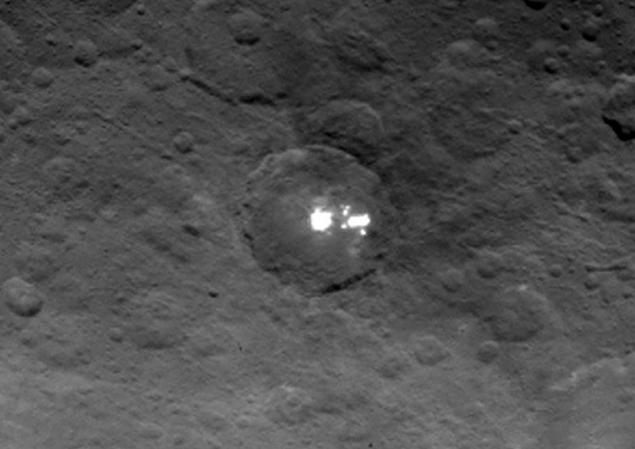
The simplest explanation that can be given to the phenomenon - the result of a relatively recent fall in the Ceres large meteorite or small asteroids. In the fall of an asteroid could crush due to the gravitational influence of Ceres and drop a few fragments of different sizes.
More exotic and intriguing version - kriovulkan. For example, on Titan were able to identify several kriovulkanov - these volcanoes, where lava flows instead of the viscous ice, instead of volcanic gases - steam. But that Titan that Enceladus is the cause of warming up the subsoil - the gravitational influence of Saturn. At Ceres such reason is not, so the volcanic hypothesis interesting because means unknown source energii.Yarkie spots on Ceres is not solved, but on the volcanism at least the past can speak more confidently. The same survey Dawn has allowed us to see another site on the body of the dwarf planet that is very similar to the volcano:
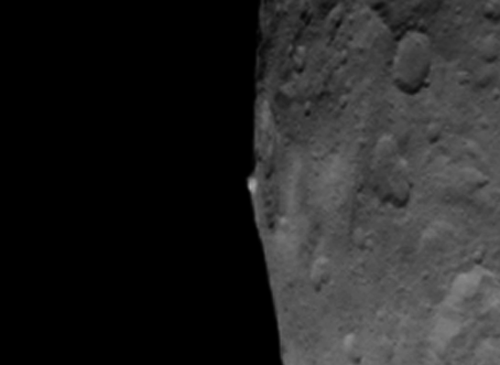
Age of the alleged volcano can be set to estimate the number of small craters on the frozen lava. It remains only to wait for close shots. I think that it will not be the only interesting find.
Meanwhile, prepare for new discoveries and mysteries of other dwarf planets - Pluto. It already seems to be considered the polar glaciers.

Fly to Pluto left two months, have patience, be reserved popcorn.
Source: geektimes.ru/post/250220/


